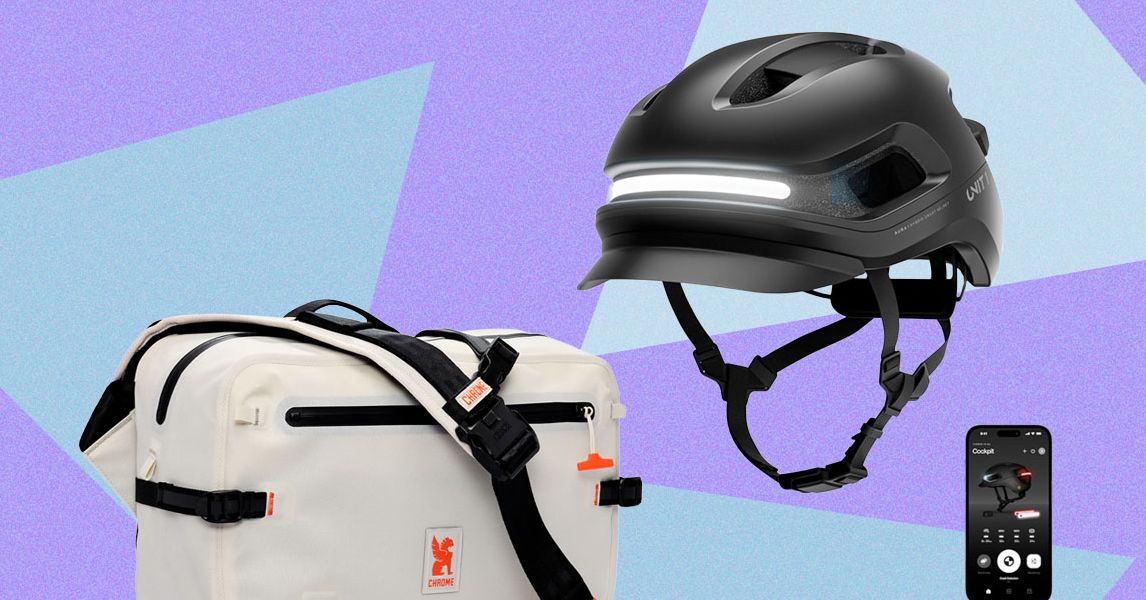Tech
After OpenAI’s new ‘buy it in ChatGPT’ trial, how soon will AI be online shopping for us?

Buying and selling online with e-commerce is old news. We’re entering the age of A-commerce, where artificial intelligence (AI) is increasingly able to shop for us.
At the end of September, OpenAI launched its “Buy it in ChatGPT” trial in the United States, using AI agents built to interact with us to do more of people’s browsing and shopping. The technology is known as “agentic commerce,” sometimes shortened to A-commerce.
American shoppers can now ask for shopping suggestions from US Etsy sellers within a ChatGPT chat—then buy a product immediately, without having to navigate away to look at individual shop pages.
Looking ahead, big companies are now spruiking the next phase of “autonomous A-commerce,” which experts predict could see AI checking out for some shoppers within the next few years.
But is handing over more of our shopping decisions to AI a good thing for us as shoppers, for most businesses or for the planet?
What’s possible right now?
For most people using AI to help them shop, the AI agent is still mostly just searching and recommending products. It still has to shift the customer to the retailer’s website to complete the checkout.
For instance, AI can do most steps to order a pizza—though sometimes slower than doing it yourself—apart from paying at the end.
That’s when we step in: we still need to sign in if we’re part of a loyalty program, enter our personal and delivery details, then finally pay.
With the “Buy it in ChatGPT” trial now underway in the US, the customer never leaves the chat, where the checkout is completed.
Shopify has said more than 1 million of its merchants will soon be able to check out within ChatGPT too. Major US retailer Walmart has similar plans.
What’s next?
In May 2025, Google launched “AI mode shopping.” Some features, like using a full body photo of yourself to virtually “try-on” clothes, are still only available for US shoppers, with limited brands.
At the time, Google said its next step will be a new “agentic checkout […] in coming months” for products sold in the US. It would give shoppers the option of tracking a product until its price drops to within a set budget—then automatically prompting them to buy it, using Google Pay. That checkout option is yet to launch.
Credit card giants Visa and Mastercard are also working on ways to make it easier for AI agents to shop for us.
Both the current and coming forms of A-commerce have the potential to spread fast worldwide, because they run largely on the same global digital infrastructure powering today’s e-commerce: identity, payments, data and compliance.
Consultants McKinsey forecast: “We’re entering an era where AI agents won’t just assist—they’ll decide.”
What are the risks and benefits?
Overspending is a big risk.
A-commerce removes many steps of the shopping journey found in e-commerce or physical commerce, leading to fewer abandoned carts and potentially higher spending.
People would need to trust AI systems with their private data and preferences, and ensure they’re not misused. Permitting AI to shop on your behalf means you are responsible for the purchase and can’t easily demand a refund.
AI systems might focus on price or speed, but not always for what you value most: from how sustainable a product is, to the ethics of how it was made.
Fraud could be a real issue. Scammers could set up AI storefronts to trick the AI, collect the money and never deliver.
Banks will need to figure out how to spot fraud, process refunds, and manage consent when it’s not a person pressing “buy,” but an algorithm doing it on their behalf.
Regulators will need to consider A-commerce in their competition, privacy, data, and consumer protection rules.
A-commerce could offer some limited environmental benefits compared to today’s way of shopping, such as fewer missed deliveries—if you’re happy to share your calendar so your AI agent knows your availability.
But greater consumption would also mean greater environmental impacts: from AI’s voracious energy and water use, to the damage done by fast fashion, more deliveries and indirect pollution.
Changing how we shop and do business
If you have even a small business, the way you make your products and services discoverable online will have to change.
Instead of just having websites built for customers and search engines, all businesses will need to build AI accessible online stores. Those will not look like the websites we see today. It will be more like a data-soaked digital catalog, filled with everything an AI agent needs to place orders: product specifications, price, stock, ratings, reviews, through to delivery options.
All those years of bigger brands buying attention and dominating search results might start to matter less, if you’re able to build a good AI accessible online store. It could be a quiet but massive shift in how trade works.
However, each business’s visibility will depend on how AI systems read and rank sellers. If a business’s data isn’t formatted for AI, it may disappear from view. That could give larger players an edge and once again make it harder for smaller businesses to compete.
How much are we happy to delegate our shopping to AI agents? Our individual and collective choices over the next few years will shape how radically shopping is about to change for years to come.
This article is republished from The Conversation under a Creative Commons license. Read the original article.![]()
Citation:
After OpenAI’s new ‘buy it in ChatGPT’ trial, how soon will AI be online shopping for us? (2025, October 25)
retrieved 25 October 2025
from https://techxplore.com/news/2025-10-openai-buy-chatgpt-trial-ai.html
This document is subject to copyright. Apart from any fair dealing for the purpose of private study or research, no
part may be reproduced without the written permission. The content is provided for information purposes only.
Tech
I Wrote This While Trotting On a Dozen Different Walking Pads

Most Versatile
If you’re not keen on buying a standing desk, check out the Lifesmart 3-in-1 Treadmill. You can wheel the lightweight machine into any room, place the desk attachment across the handrail, and get to working and walking. The desk’s height won’t accommodate everyone—it was lower than I’d like, and I’m 5’4”. But for quick, basic work like answering emails or sitting in on a meeting, it got the job done just fine.
The 3-in-1 Treadmill gets its name from its ability to serve as a walking pad (with the rail down, the speed tops out at 3.7 mph), a treadmill (with the rail up, you can run up to 7.5 mph), and a workstation (with the rail up and desk attachment on).
It’s easy to set up, and transitioning between the walking pad, treadmill, and work modes is quick and simple (you just need to use a small tool to adjust the rail, which is magnetized so it can live on the rail and never get lost in a junk drawer). You can adjust the speed with buttons on the rails or with a Bluetooth remote, and a screen on the front of the machine cycles through your workout metrics. The sleek, modern design means you won’t be embarrassed to have it out in your living space. The only drawback is that it doesn’t have any incline options.
Quietest Pad
This walking pad had the most intuitive setup of any on this list (likely thanks to its lack of a companion app, which oftentimes isn’t really necessary). I was able to set it up in minutes, and the remote connected right away, no Bluetooth pairing required. Like many walking pads, this one has a screen at the front that shows you your workout metrics. If you pause the machine to step off, you can pick right back up where you started, building on those metrics until you turn the machine off. One downside: It doesn’t track steps.
The Auto Incline Walking Treadmill offers a great incline range, going up to a level nine, or 12-percent incline. It’s one of the highest incline capabilities I’ve found in my testing. You can walk up to 4 mph on this machine, and you can connect your phone to play music through the speakers. The remote allows you to take on 30-minute, preprogrammed walking workouts, too, where the machine auto-adjusts the speed throughout (though not the incline). Otherwise, you can use it in manual mode and adjust the settings to your liking.
Tech
It’s Not About the Bike: The Jackets and Lights to Keep You Cycling All Year Round

FAQs
We asked Joshua Hale, general manager of commuter bike specialists Quella, to answer all our questions on how to get your bike ready for winter and keep it running smoothly all year long.
How can cyclists stay visible to drivers without turning into a rolling Christmas tree?
It is not just the quantity of lights that’s important. Placement also makes a huge difference. A bright front and rear light are essential—ideally one steady and one flashing—to help you stand out without dazzling anyone on the road. Reflective details on moving parts like your jacket, ankles, or pedals also catch drivers’ eyes naturally. Good quality lights and reflective accents do a lot more than overloading on LEDs.
What’s the smartest way to layer clothing for warmth without overheating?
Layer clothing with breathability in mind. Start with a moisture-wicking base layer to keep sweat off your skin, add an insulating layer like a fleece or thermal jersey, and finish with a windproof or waterproof shell. You’ll warm up fast once you’re moving, so it’s better to start slightly cool. Zips and vents that can be opened on uphill climbs and closed on descents will come in handy. Other lightweight accessories such as gloves, a buff, and overshoes can also increase your comfort without adding bulk.
How can you adjust your tire size or pressure to ride safely on wet or icy roads?
In winter, opt for wider tires with a grippier tread—28 mm or more, if your bike allows it. The extra width increases contact with the road, giving better stability and traction. Lowering your pressure slightly (by around 10–15 psi) also improves grip on slippery surfaces without feeling sluggish. Avoid slick tires when it’s icy, and check your tires regularly, as wet roads pick up more glass and grit.
What are the easiest and most effective upgrades for commuters?
Mudguards are top of the list. They keep both you and your bike cleaner and drier. Good-quality lights with USB charging make daily use simpler, and winter-specific gloves can save your fingers on frosty mornings. Wider handlebars and padded bar tape also add comfort when the roads get rough. It’s all about small upgrades that make you want to keep riding, even when it’s cold and dark.
Why does your bike need more maintenance in the winter, and what quick maintenance tips can you suggest?
Winter is tough on bikes, with grit, salt, and moisture working their way into every moving part. Regular cleaning is the single best thing you can do, even if it’s just a quick rinse and wipe-down after wet rides. Keep your chain clean and lightly oiled, check brake pads more often, and make sure cables or hydraulic lines aren’t sticking. A few minutes of care each week prevents costly repairs later, and your bike will feel smoother and quieter every ride.
Tech
PlayStation Portal’s Latest Update Proves Sony Needs a Real Handheld Console Again

Another year, another update to Sony’s PlayStation Portal. The latest tweak to the hardware considerably expands the roster of games playable on the device—but the end result only highlights how urgently PlayStation needs to re-enter the gaming handheld market for real.
The evolution of PlayStation Portal has been fascinating to watch, mainly to see Sony practically scrambling to keep up with the gadget’s unexpected popularity. Launched November 2023, Portal was intended as a mere accessory for PlayStation 5. It had no native processing abilities, simply using Sony’s Remote Play technology to stream whatever happened on players’ personal PS5 to the portable’s screen.
Although it could technically be used anywhere with a strong Wi-Fi signal, difficulties connecting to public networks and high speed requirements to even launch a stream meant the Portal was effectively only suitable for in-home use, to free up the main TV or play in another room.
Somehow, it still took off, with Sony Interactive Entertainment CEO Hideaki Nishino saying in 2024 that the Portal had been a “huge success.” The same year, Sony made it easier to connect to public Wi-Fi and added actual cloud gaming support to Portal, with a selection of games on offer to players subscribing to PlayStation Plus Premium. The initial offering included “over 120 PS5 games from the PS Plus Game Catalog,” though the curated library was subject to change. It could have been a big shift in how players approached hardware and software alike, but, in practice, didn’t really deliver.
Even so, another year on and the Portal’s success seems unstoppable. Sony’s Takuro Fushimi recently told TechRadar that “the community’s response has been overwhelming” and that Portal is now the “most widely used device for PS5 Remote Play.” It’s little surprise, then, that Sony keeps trying to hammer it into something that looks, if you squint, like the standalone gaming handheld it was never intended to be, but that players so desperately want.
Clearer Skies?
Enter the newest update to PlayStation Portal. It takes Cloud Streaming out of its beta phase, expanding the streamable library from only those titles included in the PS Plus selection to many games digitally owned by players. Until now, if you didn’t have a game installed locally on your PS5 or it wasn’t included in that cloud catalog, too bad, no Portal play for you. Going forwards, you’ll be able to cloud stream many titles if they’re tied to your PlayStation account through purchase on the PlayStation Store—although you will still need to be subscribed at the PS Plus Premium tier to use the feature, which will set you back $160 for a full year.
The assortment available is already vast—more than 3,000 games at time of writing. On the face of it, this should be a transformative development for not just the Portal, but PlayStation as a gaming ecosystem. It potentially extends availability of titles you own to wherever you want to play them, and could even help alleviate data storage woes. Although the PS5’s internal drives can be expanded, SSDs can be pricey at higher capacities, and players with large digital collections often can’t install everything they own. Being able to stream games tied to your account without eating up drive space could be a great workaround.
The update also aims to improve the broader player experience on Portal. It finally adds the ability to make in-game purchases when cloud streaming (potentially useful if you want to buy some DLC or virtual currency), and allows players to receive game invites to multiplayer sessions when playing a game via the cloud. Previously, these features were only enabled for Remote Play gaming on Portal, since they were effectively being done through the PS5 and mirrored on the Portal’s screen. Accessibility features have also been improved, adding a screen reader tool and adjustable text sizes.
-

 Politics1 week ago
Politics1 week agoThailand launches air strikes against Cambodian military: army
-

 Fashion1 week ago
Fashion1 week agoGermany’s LuxExperience appoints Francis Belin as new CEO of Mytheresa
-

 Politics1 week ago
Politics1 week agoZelenskiy says Ukraine’s peace talks with US constructive but not easy
-

 Politics1 week ago
Politics1 week ago17 found dead in migrant vessel off Crete: coastguard
-

 Politics4 days ago
Politics4 days agoTrump launches gold card programme for expedited visas with a $1m price tag
-

 Tech5 days ago
Tech5 days agoJennifer Lewis ScD ’91: “Can we make tissues that are made from you, for you?”
-

 Business5 days ago
Business5 days agoRivian turns to AI, autonomy to woo investors as EV sales stall
-

 Entertainment1 week ago
Entertainment1 week agoToo big to fail? IndiGo crisis exposes risks in Indian aviation




















